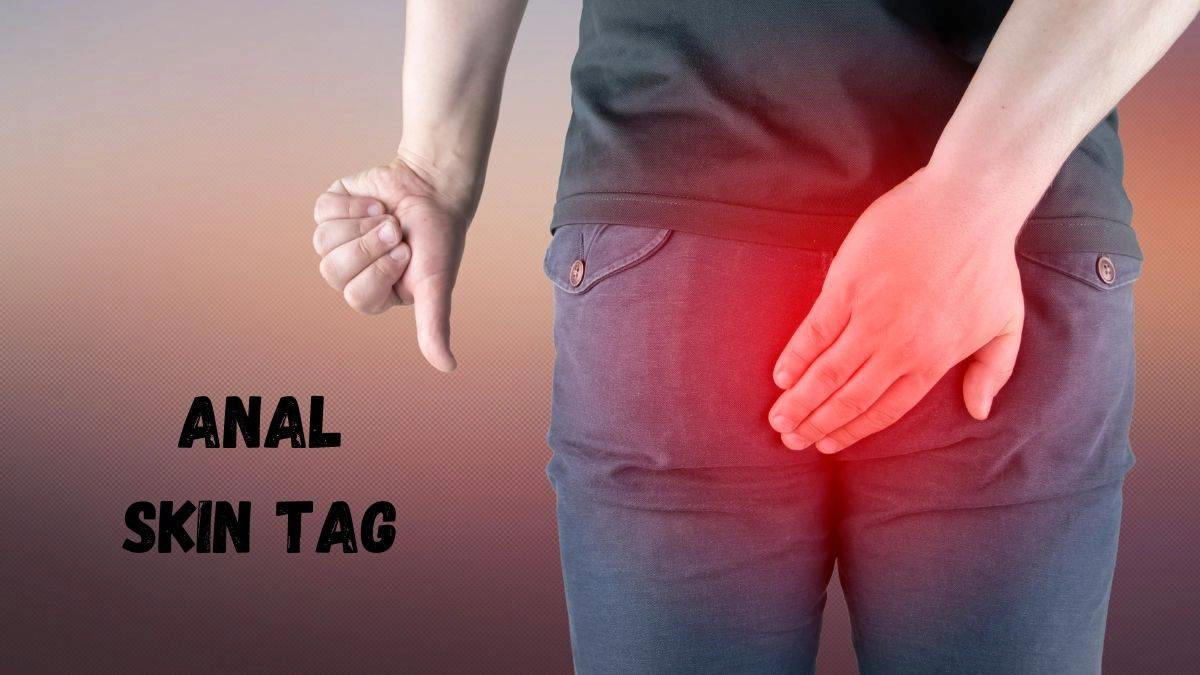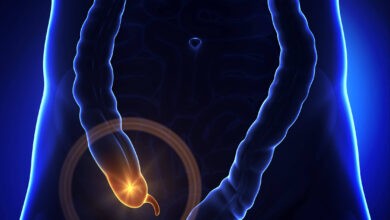Anal Skin Tag- Is It bad?

Saggy skin surrounding the anus is called anal skin tags, and it’s usually triggered by straining or irritation. They aren’t cancerous, although they can sting or be sensitive to touch. A skin tag is a noncancerous development of extra skin that is not malignant. Anal skin tags are skin tags that develop over the anus or rectum.
Skin tags on the anal region are usually tiny, spanning a few millimeters or below. They can be the same or somewhat dark in hue as the body. They usually go unseen or cause no difficulties, so they can be ignored. These frequent skin growths are easily detected and, if wanted, eliminated.
Furthermore, based on the underlying reason, certain anal skin tags might be avoided by making minor lifestyle modifications. We’ll take a look at why skin tags form all over the anus and how a physician can identify and treat them in this blog. We also go through how to stop them from developing in the first instance.
Anal Skin Tag Causes:
Tags can appear on the skin in a variety of places. The cause is frequently unknown, however, some individuals may be naturally predisposed to them. Some or all of the reasons stated are frequently detected when skin tags grow all over the anus:
Itchiness Or Contact Pressure
An anal skin tag might occur as a result of tension from a workout, long sitting, or tight dresses. Skin tags are prone to changes in contact pressure and areas of contact pressure.
Crohn’s infection
This is characterized by irritable bowel syndrome IBS, which can cause diarrhea and loose stools, among other complications. Anal skin tags are more common in persons with the condition, according to a clinical evaluation published in 2008.
Diarrhea
Because the feces are acidic and the region is more regularly cleansed with coarse toilet roll, persistent loose bowels can cause irritation to the skin surrounding the anus.
Performing Heavy Weightlifting
This might cause swelling by putting undue strain on the veins in your anus or anal area.
Loose stools
The skin must stretch to accommodate a large or hard stool, and straining can put pressure on the area, leading to bulging blood vessels. If the skin does not return to its original shape after straining or stretching, skin tags can develop.
Hemorrhoids
An increase in the size and irritation of capillaries in the genital region. Hemorrhoids are highly common in the United States, affecting around 1 of about 20 people. Some excess skin may remain after the hemorrhoids have healed and the vein has shrunk, resulting in the creation of a skin tag.
Pregnancy
Due to bodily fluctuations and the weight the fetus exerts on the veins beneath their uterus, pregnant women are more susceptible to hemorrhoids and skin tags.
A physician can identify a tag that is apparent with a physical assessment and, if required, address removal methods.
To identify if there are any growths in less apparent areas, a medical specialist may need to conduct a computer-based rectal examination. A lube, a gloved hand will be inserted into the anus by the physician. Visual examination of the inside of the anus for growths may be required.
An anoscopy is a technique in which a doctor inserts a small scope just into the anus and examines the rectum with a lighted tube. The majority of individuals are unconcerned. Your doctor will lube one gloved finger and put it into your anus during a rectal check. This enables them to detect any abnormal formations within your rectum or anus.
Keep in mind that, while a rectal check may be unpleasant technically and possibly psychologically, it is a quick procedure. Also, keep in mind that medical practitioners are skilled to administer these tests, so it’s all in a day’s work for them.
A sigmoidoscopy is used when a medical practitioner wants to look more into the lower digestive tract. A sigmoidoscopy is a diagnostic that examines the butt hole and the sigmoid colon, which is the final segment of the colon. It may not be necessary for basic skin tags, but it may be necessary if a bulge in the anal area is suspected to be caused by anything else.
This check is normally performed by a gastroenterologist and necessitates the use of an enema or a strong laxative before the procedure. While no anesthesia is normally used, you may be given a sedative by your medical doctor to assist you in calm or sleep throughout the process.
The sigmoidoscope is a device that is introduced into the rectum and maneuvered up into the large intestine. A medical expert can have a proper view of the colon’s final portion and, if necessary, take samples.
How to get rid of Anal Skin Tag?
You might wonder about how to remove anal skin tags as anal skin tag removal may not be reliable or recommended. A health care professional will explain the dangers and suggest the correct course of treatment.
Tiny skin tags can sometimes be eliminated without piercing the skin. Liquid nitrogen can be used by a health professional to remove skin tags. The majority of tags fall off after a couple of days. Cryotherapy is the name for this technique. Alternatively, a medical specialist may use a laser to destroy the skin, forcing the skin tag to gradually disappear.
Skin tags can be carefully taken out using medical scissors, but larger tags may necessitate more complex excision and stitches. However, specialists rarely advise this since bacteria from the stool can readily contaminate a healing wound. Usually, patients can go home the same day and begin mild exercise the following day after having an anal skin tag removed with liquid nitrogen, a laser, or scissors.
For a few days, the medical provider might suggest avoiding weight training. It may be required to wipe the anal area properly after each stool passage as the skin recovers. Medical wipes or detergents, as well as lotions that aid tissue repair and prevent infection, may be recommended by your doctor.
To make stool motions easier to pass, patients are normally recommended to use stool softeners and consume plenty of water. Sitz showers can also be relaxing and beneficial to the skin’s healing. It is not recommended that people attempt to remove an anal skin tag at home.
Anal skin tag bleeding, discomfort and infection are all possible outcomes. If a person feels they have an anal skin tag, they should see a doctor so that cancer or another condition may be ruled out.
Skin tags can’t always be avoided. The following suggestions, on the other hand, may assist in reducing their emergence:
- Make sure you’re wearing breathable, well-fitting panties. The underwear should be flexible and absorbent, resulting in little contact pressure and itchiness. Any underwear should fit comfortably while a woman or man is walking or sitting.
- Keep your stools in check. Consume a high-fiber diet to avoid constipation and bowel movements that require stretching and straining.
- Frequent cleansing can irritate you. After a stool movement, many individuals may find that wiping the region clean with a moist wipe maintains the spot fresh without irritating the skin.
- Have you been given a diagnosis for your digestive issues? Continuous diarrhea or loose stools can suggest an underlying disease that requires medication, while also raising the chance of developing skin tags.
- During the day, consume 6 to 8 cups of water.
- Following your medical doctor’s recommendations for high-fiber meals or fiber supplements.
- Make an effort to maintain a healthy weight. Obese individuals are more likely to get skin tags. Get frequent workouts and eat a diet rich in fruits, vegetables, whole grains, and lean protein. The Centers for Disease Control and Prevention (CDC) suggests 30 minutes of physical activity five times per week.
Conclusion
Anal skin tags are painful and unpleasant bits of extra skin that form all over the rectum. Hemorrhoids, mending tears in the genital tract, and severe skin inflammation are all potential reasons. Thankfully, these non-cancerous skin growths can be easily detected and, if wanted, removed promptly and pain-free at the clinic of your medical professional.
Easy at-home techniques like using stool softeners and avoiding intense activities for a short period will help you heal after having one or more anal skin tags removed. Skin tags can be bothersome and inconvenient, but they’re usually not a cause for concern and won’t turn into a more serious ailment or cancer.
However, a ball or bulge in your anal area isn’t always a skin tag. To be safe, have it examined by a medical professional. If a previously identified anal skin tag grows in size or color or becomes painful, it’s also a good idea to consult your doctor.
Also Read: Itchy Pubic Hair: Causes And Treatments
FAQs about anal skin tag
How to shrink the anal skin tag?
In most cases, anal skin tags are attached to internal hemorrhoids that are small. So, it can be eliminated and can be shrunk by small laser exposure to the area.
Does anal skin tag go away?
Yes in a few days it will fall away itself without the help of others. The doctor will remove one anal skin tag at a time to prevent further complications.




